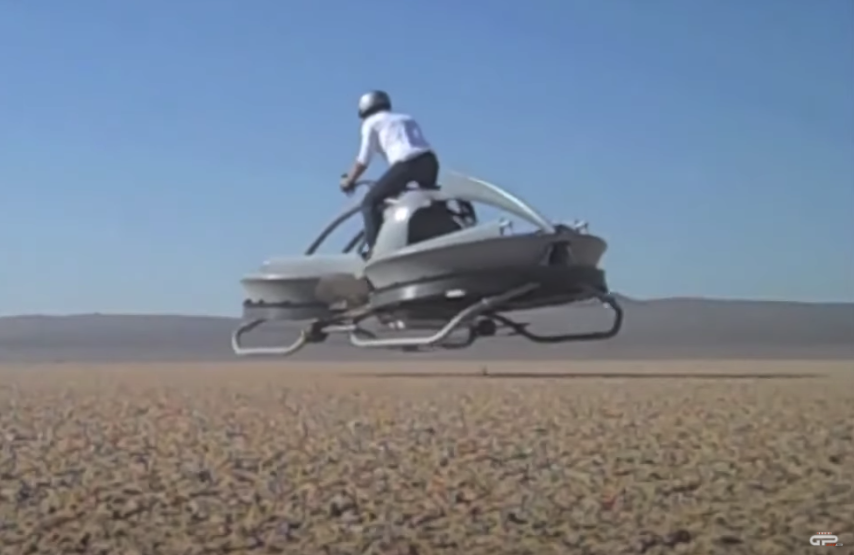A long time ago, in a galaxy far, far away, technology was much cooler than it is in our reality: commercial spaceships bend space time traverse galaxies in seconds; autonomous androids capable of translating any language on the fly, or leaving a battlefield in ruins; deadly plasma swords that fit comfortably under your bathrobe.
These classic “Star Wars” technologies have captured the imagination for decades, and some of them are finally coming to fruition.
Here are seven futuristic Star Wars technologies that could soon become a reality.
battle droids

Unmanned aerial vehicles (see: battle drones) have been a staple of warfare for several decades, but you’ll never hear two Predator drones arguing like an old couple, R2D2 and C3PO style. Artificial intelligence is still a work in progress, but humanoid robots (also known as androids) have made literal leaps in capability and design in recent years. American tech firm Boston Dynamics demonstrates this with two now-infamous robots: Atlas, a terrifyingly agile bipedal droid that can run, backflip, and do parkour – and the robo-dog point – a four-legged autonomous robot that has already found work in hospital wards, on farms, and with the NYPD. These bots aren’t designed specifically for combat, but we’d hate to run into one of them in a dark alley at night.
laser swords
Lightsabers are perhaps the most coveted piece of technology for any kid who grew up watching “Star Wars.” Made from a retractable plasma blade generated by an invented gem called a kyber crystal, combat-ready lightsabers are still beyond the reach of modern science. However, creative inventors, like those behind the YouTube channel blacksmith – have come up with some clever (and deadly) lightsabers that come pretty close to the Jedi’s weapon of choice. In 2018, Hacksmith created the world’s first retractable plasma-based energy sword, with a 4,000-degree Fahrenheit (2,200-degree Celsius) blade capable of cutting through solid titanium. The blade requires an external fuel pack filled with compressed propane gas and oxygen, so it’s not likely to fit on any would-be Jedi’s belt. But, it could easily burn through a human hand, in case you and your dad want to recreate the climax of “The Empire Strikes Back.”
bionic arms

Depending on how well your lightsaber works, you may soon need the help of a bionic arm, like the one Luke receives at the end of “Empire.” Here’s a piece of technology that isn’t just science fiction anymore. Functional prosthetic arms that can grasp, pinch, make a fist, and even raise a thumb are becoming more common, with some even inspired by “Star Wars.” The prosthetic company open bionic, for example, sells a Hero Arm for adults and children ages 8 and up, which is available in more than 50 styles, including Star Wars and Marvel. They typically sell for between $10,000 and $20,000 per arm, depending on BionicsForEveryone.com.
Universal translators
C3PO is famous for his fluency in over 6 million forms of communication. On paper, that sounds much more impressive than the 100 or so languages that Google translator know, but how often do you really need to ask for directions on ewokese, anyway? On the plus side, you won’t need to visit any shady junk dealers to take advantage of Google Translate. Simply open the website on your phone or computer, then type directly into the box, or speak into your microphone and watch the app translate your voice into the language of your choice, in real time. You will never need to conjugate another verb again!
Landspeeders (high-speed hovercraft)

The best way to cross the dunes of Tatooine in style is on a landspeeder – a sort of hovercraft/car hybrid that can comfortably accommodate a family of four (or two humans and two droids, as the case may be). Hovercraft technology has been around since the late 1950s, according to the UK. hovercraft museum, but it’s only recently that hovercraft designs have moved closer to fast and sleek “Star Wars” fare. Several companies are working on real hoverbikes, including the UK-based one Malloy Aeronautics and based in the USA. aerofex. Both projects are still in the prototype phase, but these test videos of hovercrafts speeding across the Mojave Desert look promising.
commercial spacecraft
To escape the sandy backwater of Tatooine, Luke and Obi-Wan hire a private spaceship for 17,000 credits. In our world, commercial space travel costs a little more, and you can’t even get out of the Solar system. In June 2021, an auction winner paid $28 million to join the inaugural flight of Blue Origin, a commercial space travel company founded by Amazon’s Jeff Bezos. The son of the lucky winner joined Bezos and his brother on a 10-minute journey into space, reaching a maximum altitude of about 62 miles (100 kilometers) above Earth (technically, beyond the point where Earth’s atmosphere ends and space begins). It’s 10 expensive minutes, but some experts have predicted that the cost of commercial space travel could drop to about $100,000 per person in the next decade. Hurrah!
warp engine
From time to time, Han Solo’s ship, the Millennium Falcon, makes a daring “jump to hyperspace“, allowing the ship to travel extraordinary distances in mere moments. If hyperspace is the same thing as “warp drive,” a concept the US government has been actively investigating, according to recently published documents — then involves distorting the shape of space-time to get from one part of the universe to another. In 1994, the physicist Miguel Alcubierre published an article showing how warp drive could be physically possible, by using equal amounts of positive and negative energy to simultaneously compress space in front of a spacecraft while expanding space behind it. But for now, negative energy remains purely speculative, as is warp drive technology. Still, that hasn’t stopped theoretical physicists from investigating it.
Originally published on Live Science.
